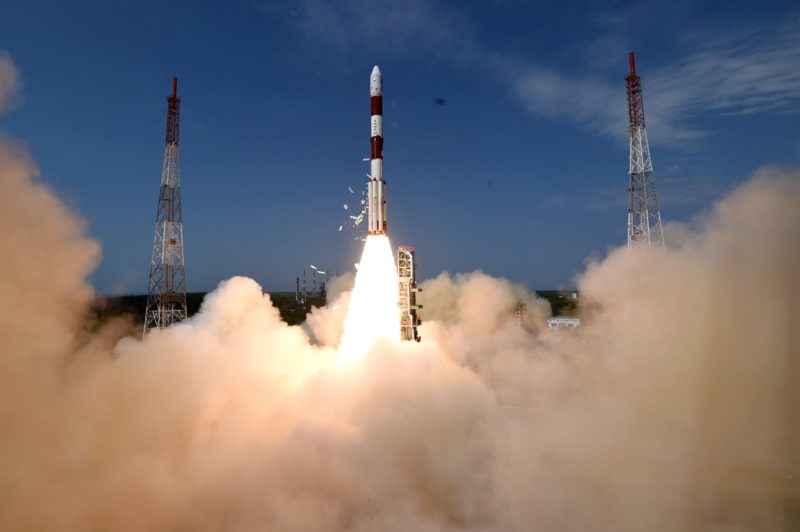Latest News

PSLV-C38 takes off from Satish Dhawan Space Center on June 23, 2017. Photo: ISRO.
PacSci EMC has successfully launched its own on-orbit technology demonstrator satellite, PacSciSat. The company will conduct payload tests to prove the performance of several of its commercial space technologies once the satellite is commissioned and in orbit. PacSci EMC’s intent with this mission was to give the company’s customers additional assurance and confidence that an electronic controller and propulsion system performs as specified in the harsh space environment where reliability, precision and control are paramount. PacSci EMC self-funded PacSciSat to establish flight heritage for these products.
The satellite launched on June 22 onboard the Indian Space Research Organization (ISRO) Polar Satellite Launch Vehicle flight C38 (PSLV-C38) from the Satish Dhawan Space Centre in India. The satellite is equipped with two Smart Energetics Architecture (SEA) controllers, four Modular Architecture Propulsion System (MAPS) rocket motors, two Smart Initiators and two space standard initiators.
After a two-week satellite commissioning period once the satellite is in orbit, PacSci will conduct payload tests using the SEA controllers to fire the initiators and MAPS rocket motors. MAPS is a solid, clean-burning propellant array of rocket motors, which are fired in pairs to maneuver the satellite.
SEA technology actuates hundreds of devices on launch vehicles and satellites while taking up little volume, mass or power, and can actuate launch vehicle rocket motors, stage separation systems, release devices and deploy satellites into space. On satellites and space vehicles, SEA technology can deploy solar arrays, scientific instruments and other devices, and can use either pyrotechnic or non-explosive, motorized actuators in any combination needed.
Get the latest Via Satellite news!
Subscribe Now